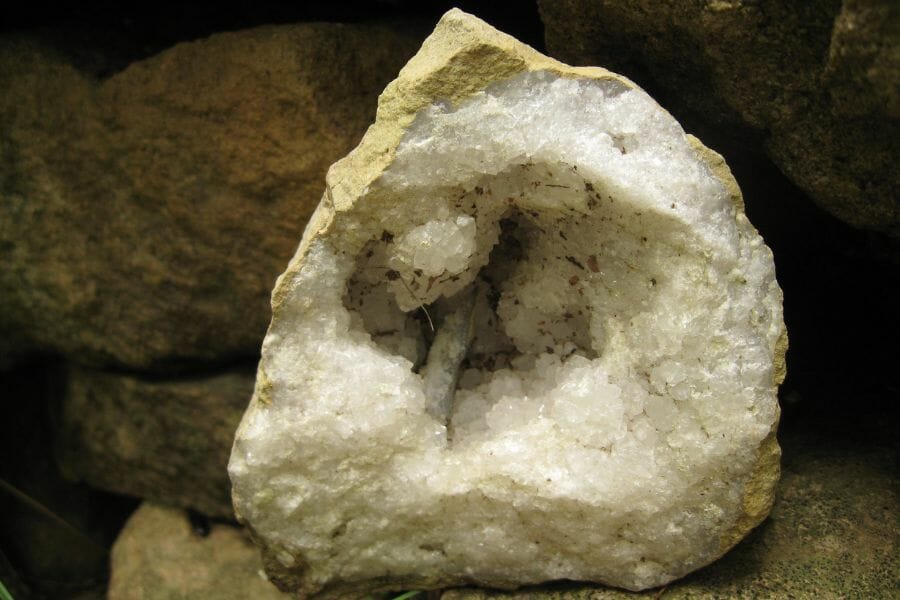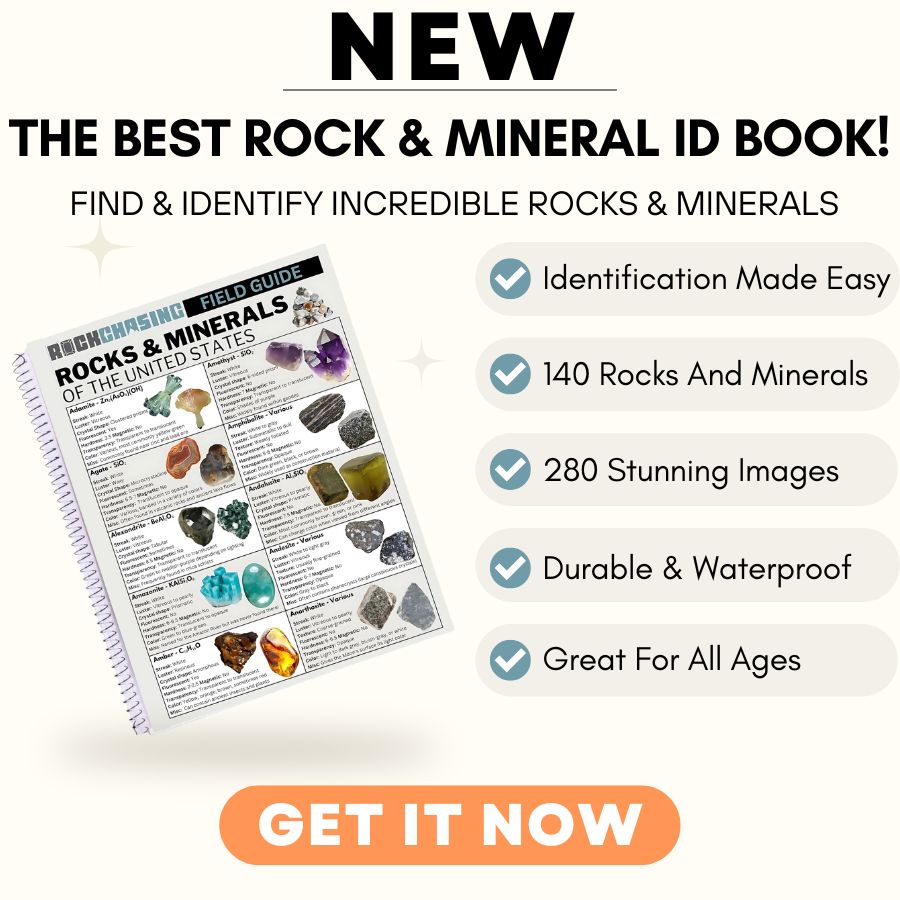Geodes are like nature’s surprise eggs, filled with sparkling crystals inside a plain-looking rock. Our state is a treasure trove for these hidden gems, with its many different landscapes that make it perfect for rock hounds.
If you’re itching to crack open your own crystal-filled wonder, you’re in the right place!
This article will show you the best spots in our state to find geodes. We’ll also share some handy tips to make your geode hunting adventure a success.
So grab your hammer and get ready to discover the beauty hiding in ordinary-looking rocks all around this state!
How Geodes From Here
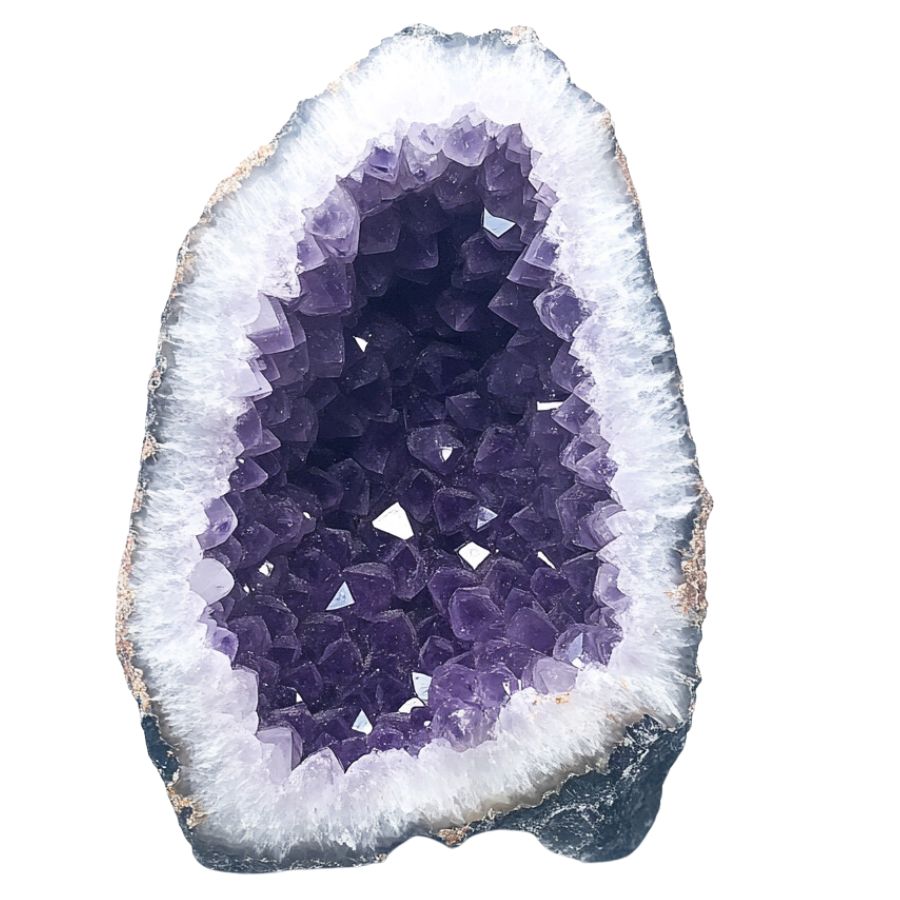
Geodes form when bubbles in volcanic rocks or spaces in sedimentary rocks get filled with minerals over time.
First, water rich in minerals like quartz or calcite seeps into the hollow space. As the water evaporates, it leaves behind the minerals, which slowly build up layer by layer.
Eventually, these minerals create a crystal lining inside the geode. The outer shell stays rough, while the inside becomes a sparkling treasure.
The process can take thousands, even millions, of years, making each geode a unique and beautiful time capsule of Earth’s natural forces.
The Types Of Geodes Found in the US
There are many fascinating varieties of geodes that can be found across the United States, including in our own state. Each type is distinctly beautiful and intriguing:
Amethyst Geode
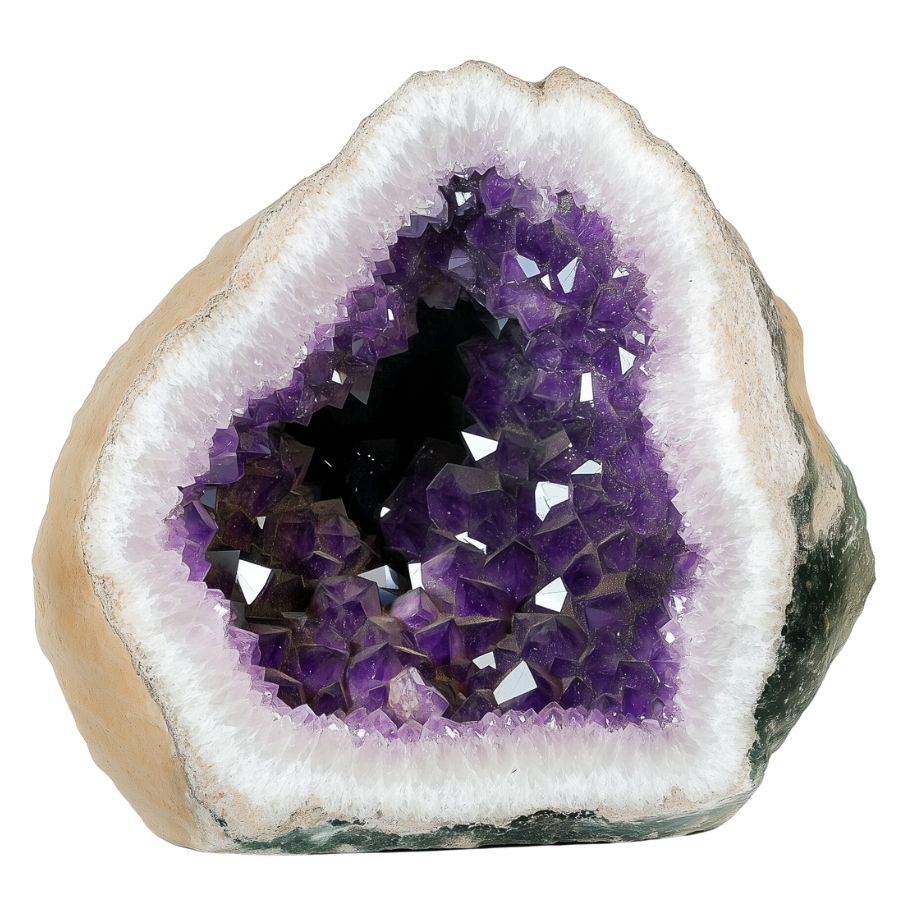
Amethyst geodes look plain on the outside, like a potato. But crack them open, and you’ll find stunning purple crystals. These crystals can be light lavender or deep purple.
The structure of crystals inside can vary widely. Some are tiny and densely packed, creating a sparkling surface. Others form large, distinct points that jut inwards.
The color range is impressive too, from pale lilac to deep royal purple. Some amethyst geodes develop unique features. “Stalactites” of amethyst might hang from the top.
In rare cases, you might find a water bubble trapped inside, a remnant from the geode’s formation millions of years ago.
Citrine Geode
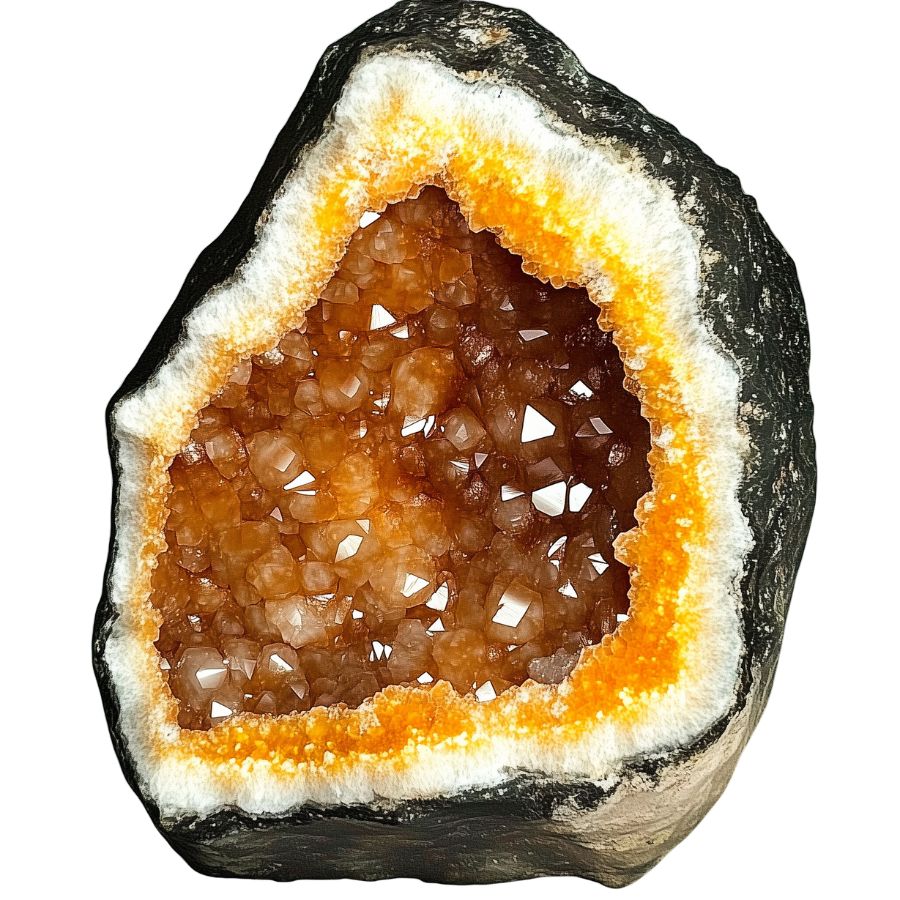
Citrine geodes are eye-catching rocks with golden yellow to orange crystals inside. They sparkle when light hits them, looking like sunshine trapped in stone. The colors come from iron mixed in with the quartz.
Unlike many gemstones, citrine’s color is often evenly distributed throughout the crystal.
Most citrine on the market isn’t natural. It’s actually heat-treated amethyst. This process turns the purple amethyst into vibrant citrine. Natural citrine is rarer and often has a more subtle color.
Pyrite Geode
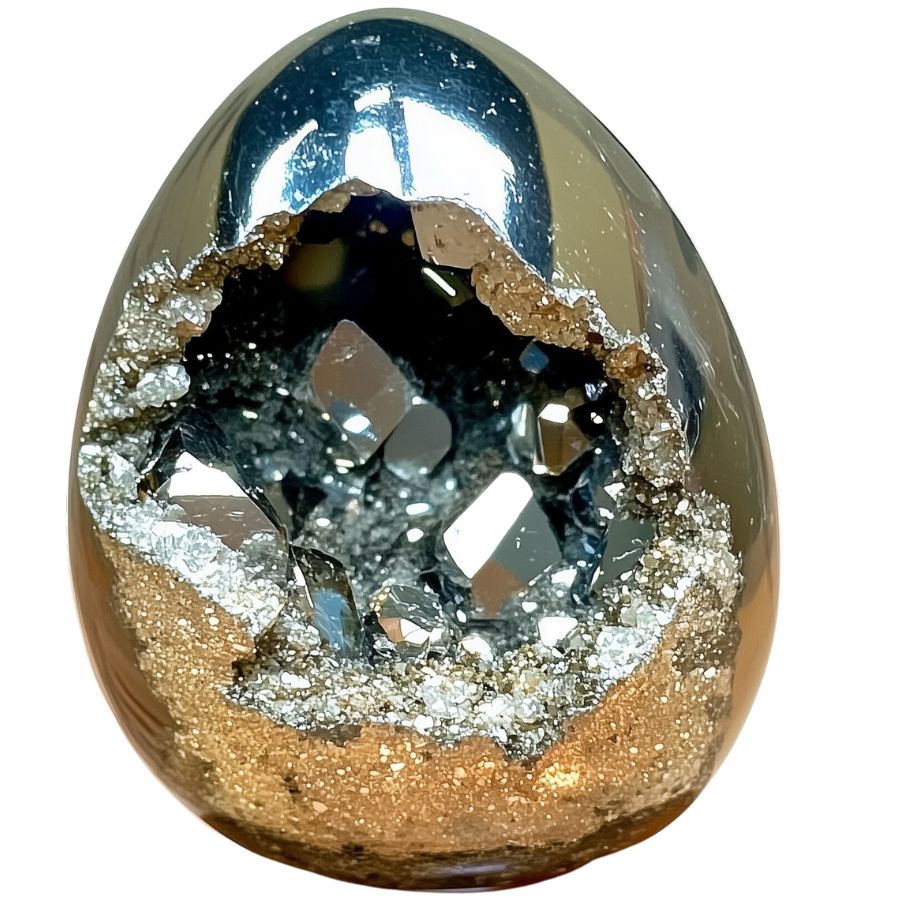
Ever cracked open a rock and found gold inside? Well, not real gold, but something that looks just like it. That’s a pyrite geode. Pyrite is called “fool’s gold” because it’s so shiny and golden.
Inside these geodes, pyrite forms in cool shapes. Sometimes it’s perfect cubes. Other times its clumps or even round balls called “pyrite suns”.
Pyrite has a fun history. People have been mixing it up with real gold for thousands of years. That’s how it got its nickname.
Selenite Geode
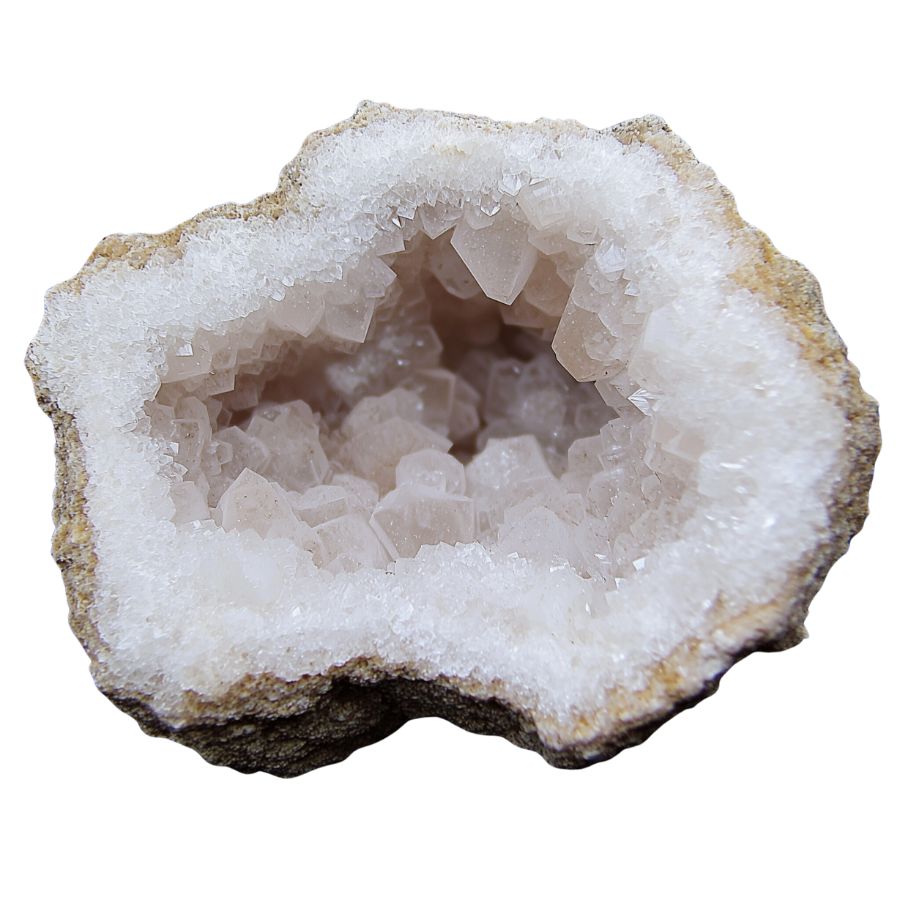
Selenite geodes stand out from the crowd. They’re white and see-through, with a glassy look. When you open one up, you’ll see crystals that look like they’re made of ice or moonlight.
Unlike harder geodes, selenite is soft. You can scratch it with your fingernail! This softness means you need to handle it carefully. But it also means selenite can be shaped into beautiful forms easily.
One cool thing about selenite is how it plays with light. Hold it up to a lamp, and you’ll see the light shine right through it. This makes selenite geodes popular for decorative lamps and light fixtures. They add a magical glow to any room.
Celestite Geode
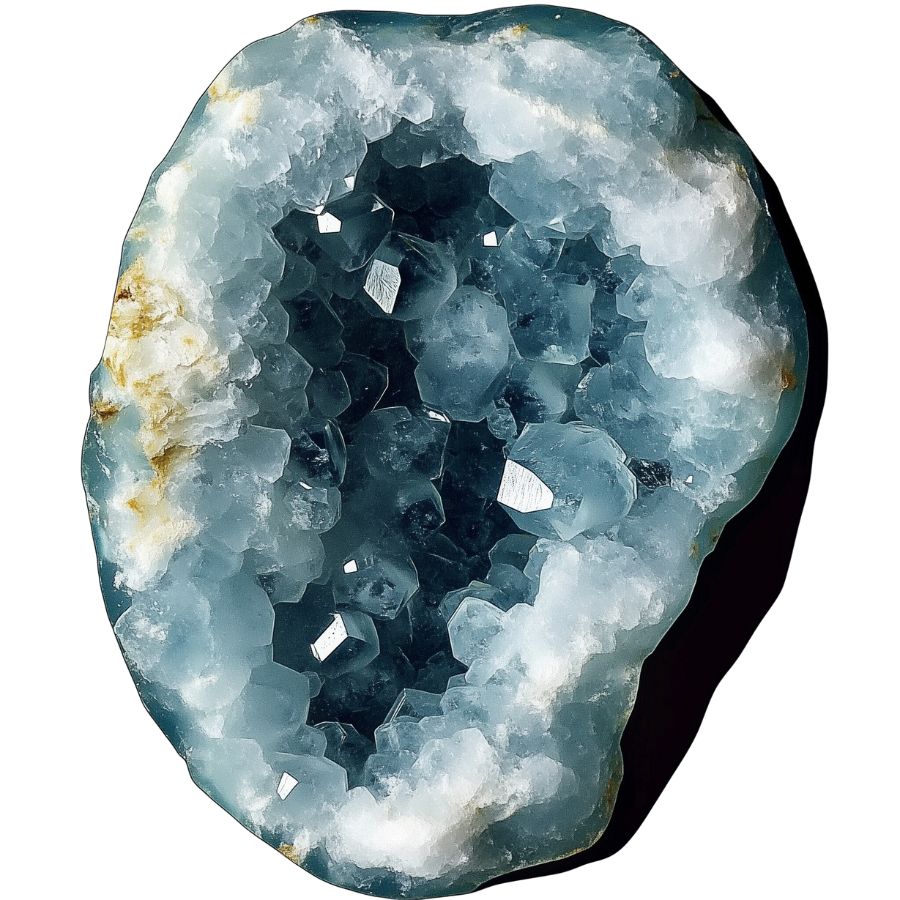
Celestite geodes are like pieces of sky trapped in rock. Their crystals are typically a delicate blue, ranging from almost colorless to deep sky blue. In rare cases, celestite can form in other colors. Pink celestite is highly prized by collectors.
One unique feature of celestite is its perfect cleavage. This means the crystals can be easily split into rhombohedral shapes.
These geodes form in a unique way. They start as nodules of a soft mineral called alabaster. Over time, this dissolves and is replaced by celestite crystals. Some celestite geodes are huge, like the famous Crystal Cave in Ohio.
Celestite isn’t just pretty to look at. It’s used to make strontium, an element with many uses. You’ll find strontium in fireworks, where it creates red colors. It’s also used in making TV screens and ceramics.
Jasper Geode
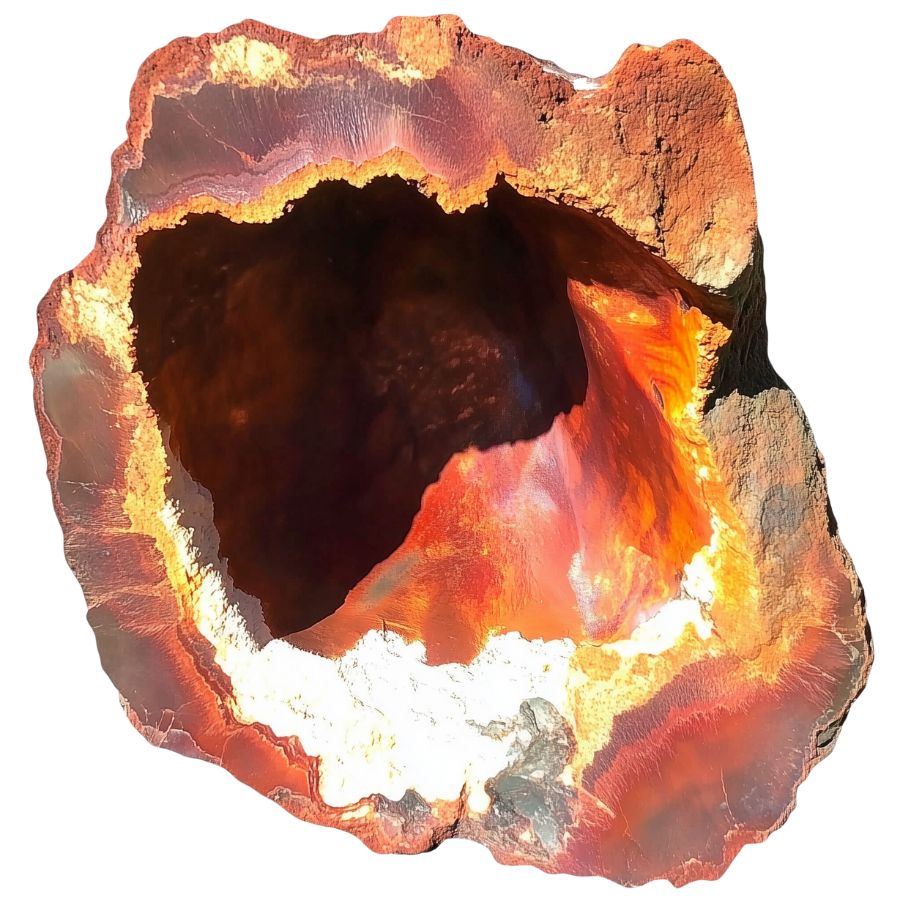
Jasper geodes are the chameleons of the mineral world. They can appear in almost any color, often with multiple hues in a single specimen. Patterns can range from solid colors to intricate swirls, bands, or spots.
One fascinating type is picture jasper. These geodes contain patterns that resemble landscapes, with “skies,” “mountains,” and “rivers” visible in the stone. Each one is like a miniature painting created by nature.
Some jasper geodes contain orbicular patterns – spherical structures that formed as the jasper solidified. These create eye-catching bull’s-eye or flower-like designs in the stone, making each piece truly one-of-a-kind.
Carnelian Geode
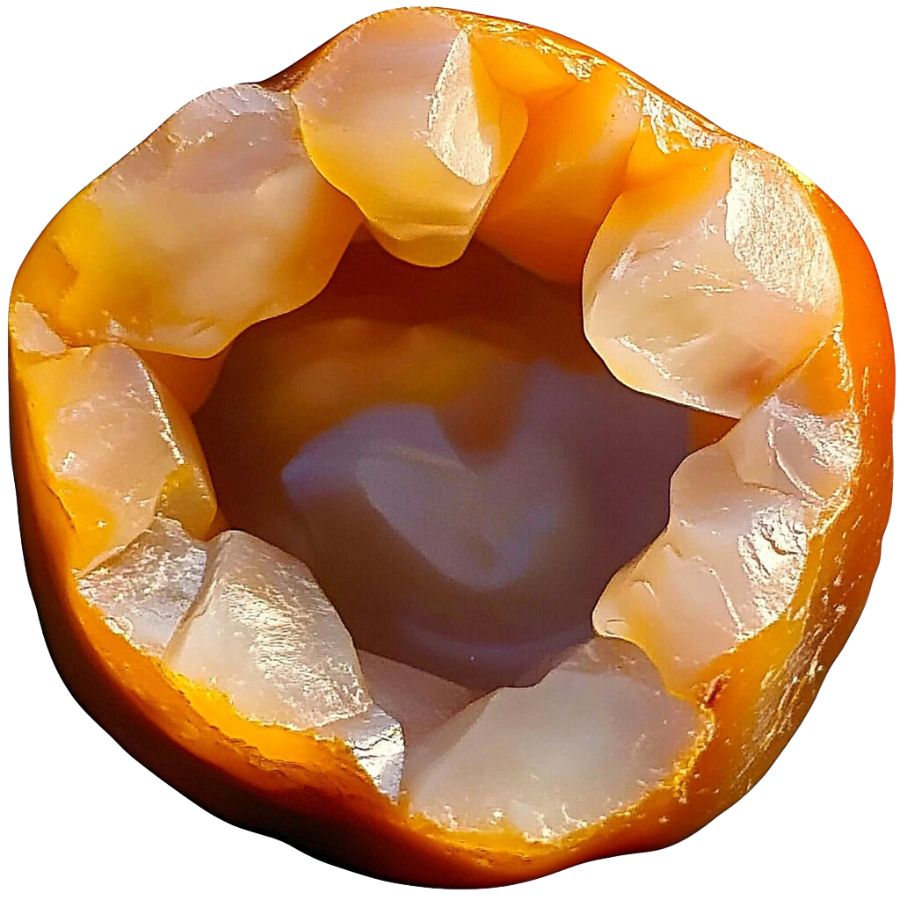
Carnelian geodes have vibrant orange to reddish-brown colors. They can be somewhat see-through, which makes them look even more interesting. The bright colors come from the iron in the stone.
These geodes stand out from other similar stones. They’re brighter than sard, which is usually darker and more brownish. And unlike agate, carnelian doesn’t have bands or stripes.
Carnelian has been popular for a long time. Ancient Egyptians and Greeks used it to make special rings. It’s tough enough for everyday jewelry.
Some people heat or dye carnelian to make its color even brighter. This makes it a favorite for both rock collectors and jewelry lovers.
Fluorite Geode
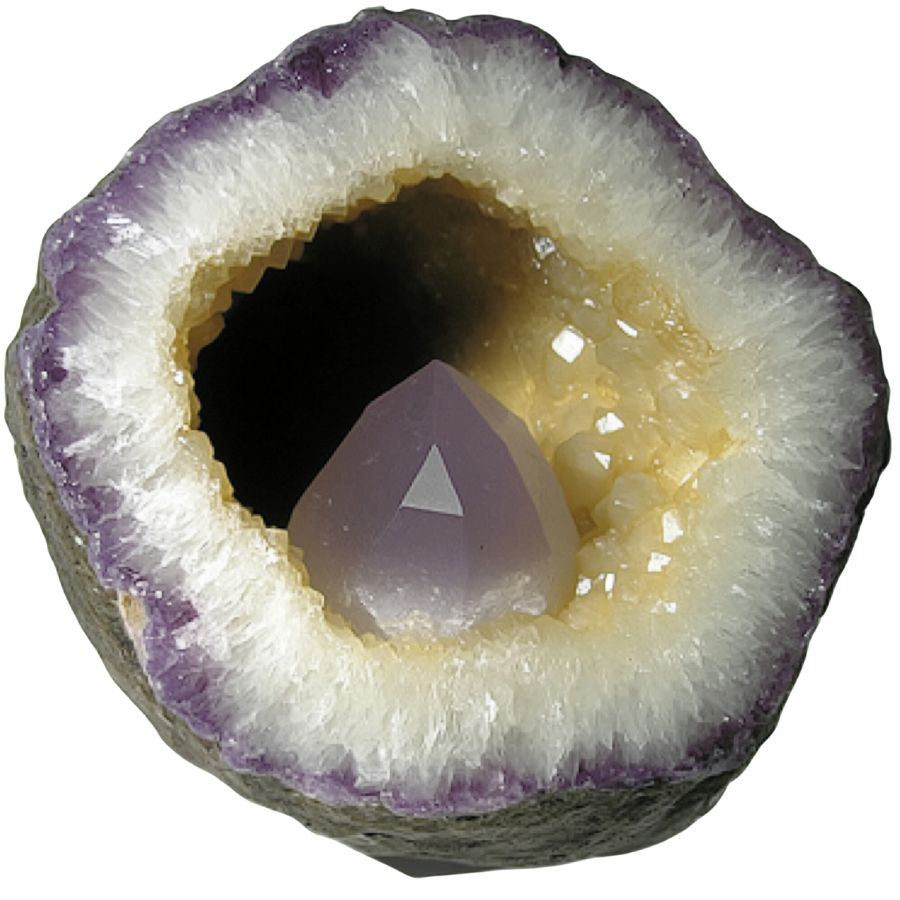
Fluorite geodes are like nature’s rainbow. They come in many colors – purple, green, blue, yellow, and sometimes even clear or black. When you open one up, you might see cube-shaped or eight-sided crystals inside.
What makes fluorite special is that you can often see more than one color in a single stone. This is different from many other geodes. Also, fluorite has a unique way of splitting when it breaks.
A cool fact: fluorite glows blue under ultraviolet light. This was first discovered back in 1852. Because of its many colors and this glowing ability, fluorite is sometimes called the “most colorful mineral in the world.”
Scolecite Geode
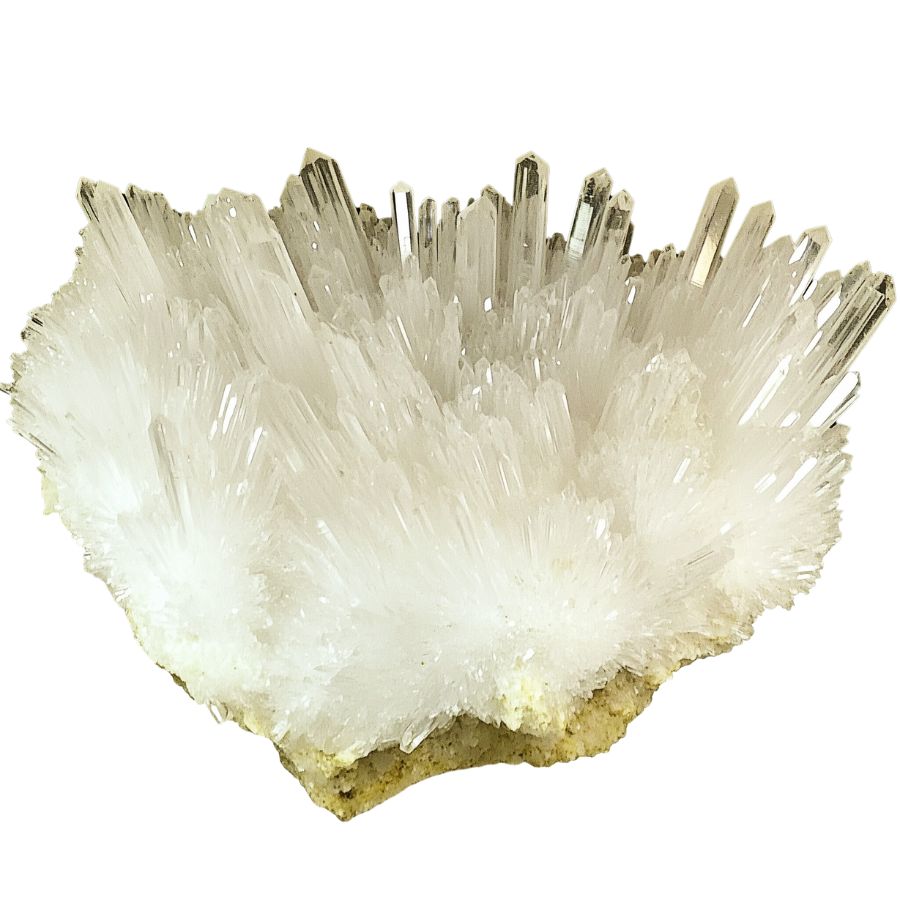
Scolecite geodes are like tiny crystal caves. They’re usually white or colorless, but sometimes you might find pink, yellow, or green ones.
What makes them special is the crystals inside. They look like thin needles or delicate hairs, all pointing out from the center.
These geodes are different from others because of their crystal shape. Instead of blocky or chunky crystals, scolecite has these fine, hair-like ones. This gives them a unique, delicate look.
Scolecite has an interesting property – it can hold a lot of water in its structure. This means it can absorb and release water easily. This makes scolecite useful in various ways, not just as a pretty rock to look at.
Apophyllite Geode
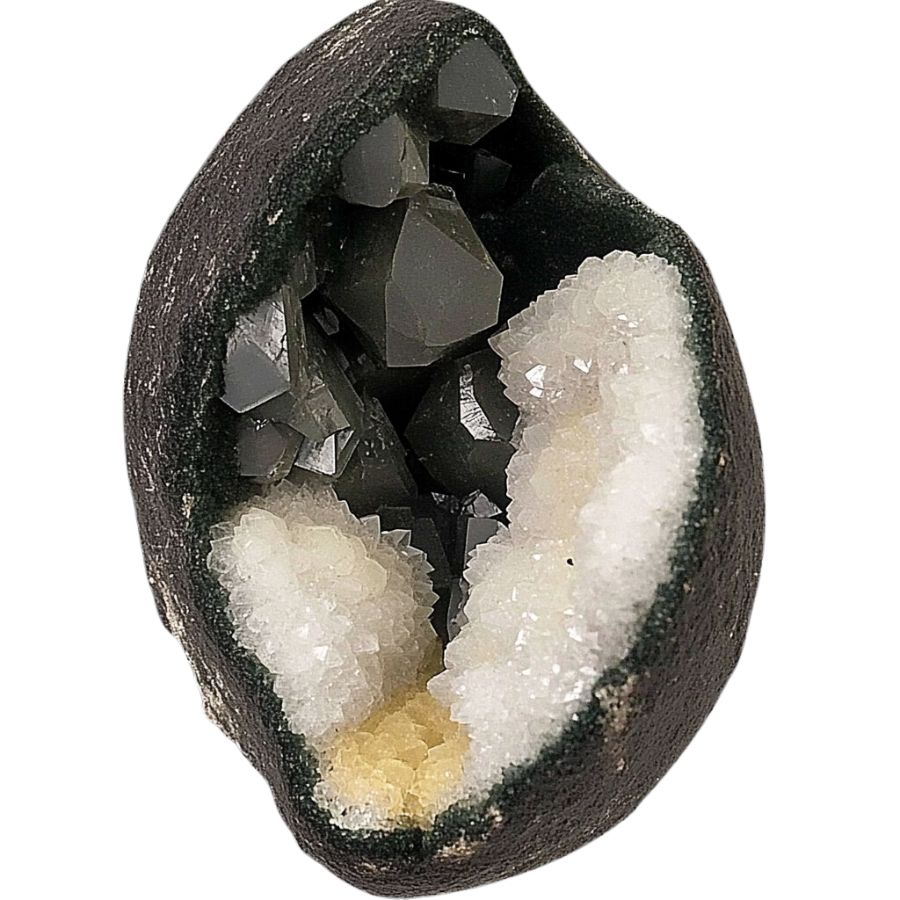
Apophyllite geodes are like nature’s disco balls. They often have dark or black crystals inside a hollow rock. These crystals can be see-through or slightly cloudy, with cube-like or flat shapes.
What makes apophyllite geodes stand out is how the crystals form. They grow in round clusters that look like tiny disco balls. This unique formation is rare and makes them special to rock enthusiasts.
Collectors really prize these “disco ball” clusters. They’re not common, which makes them valuable to people who love unusual rocks. The way apophyllite crystals catch and reflect light adds to their appeal, making them fascinating to look at and study.
What Rough Geode Looks Like
Identifying a rough geode might seem tricky, but with a few tips, you can spot one even if you’re not a rock expert. Here’s how you can do it.
Look for a Rounded Shape
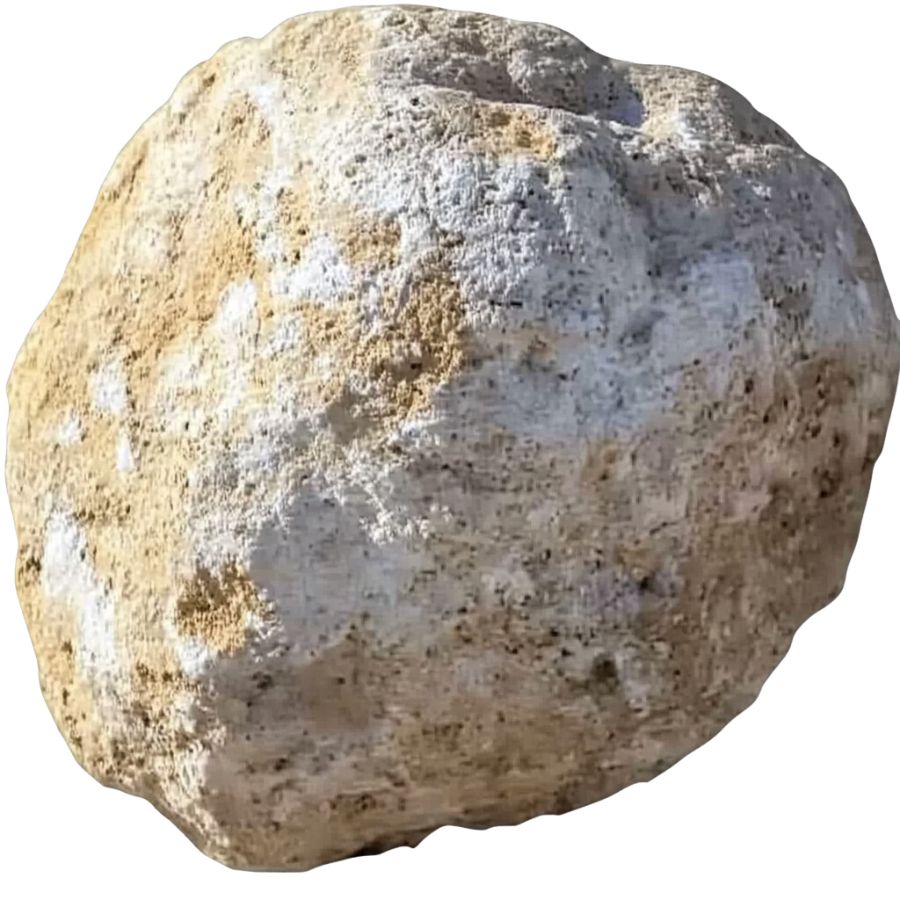
A rough geode often has a rounded or egg-like shape. It might not be perfectly round but look for a generally bulbous form.
When you’re out searching, skip the flat, jagged rocks. Geodes usually have smoother exteriors because they’ve been rolling around in rivers or other environments for a long time.
Check for a Dull, Bumpy Surface
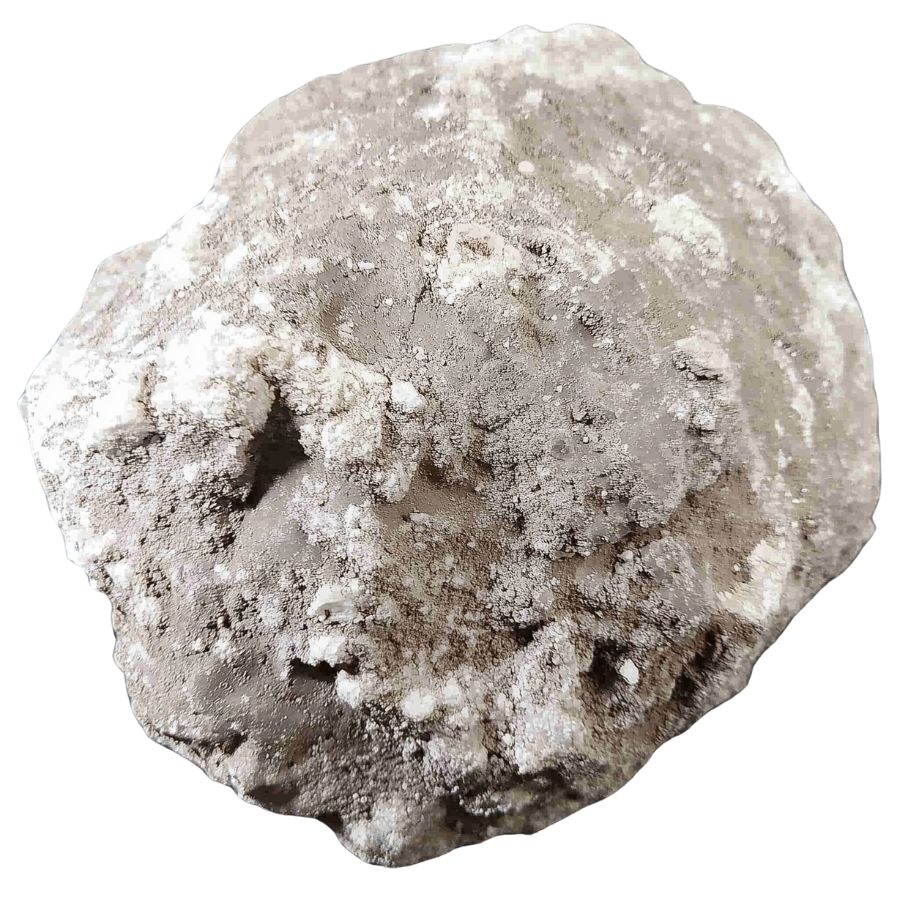
The outside of a geode isn’t usually shiny. Instead, it’s dull, bumpy, and a bit rough.
Imagine a potato or a clump of dirt with some bumps and dents. That’s how a geode might look before it’s cracked open.
The outside won’t give away much of what’s inside, so don’t be fooled by its ordinary appearance.
Test the Weight
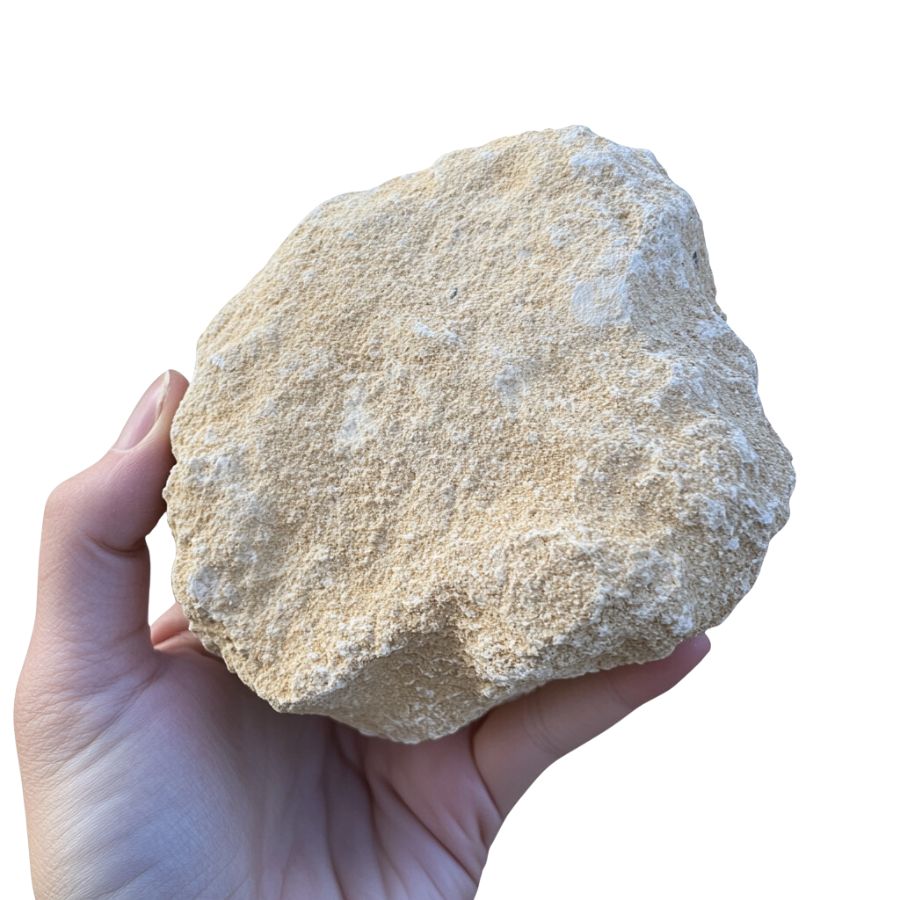
Pick up the rock. Does it feel lighter than it looks? That’s a good sign!
Geodes are hollow or partially hollow, which makes them lighter than solid rocks of the same size. If it feels unexpectedly light, you might have found something special.
Look for Tiny Crystals or Mineral Patches
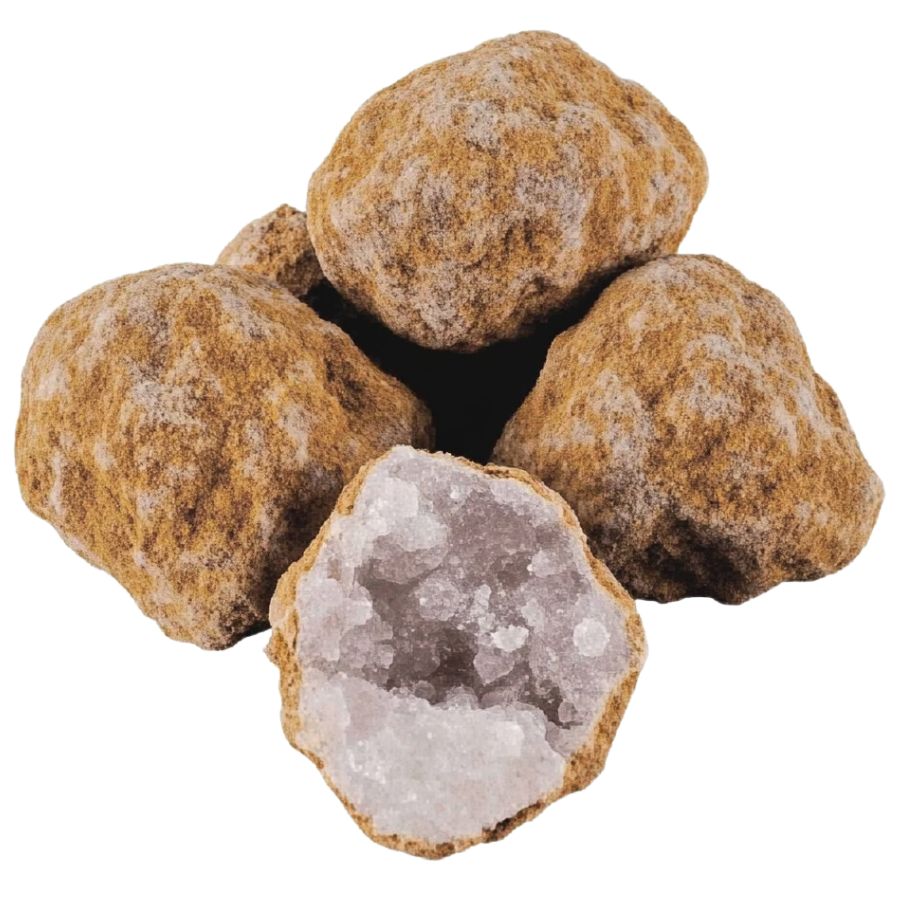
Sometimes, you can spot small crystals or mineral deposits on the outside. These could look like tiny sparkles or specks of color.
While the outside of a geode is usually dull, a little peek of what’s inside might show through. Keep an eye out for these hints, especially if you’re in a known geode-rich area.
Tips on Where to Look
Once you get to the places we have listed below there are some things you should keep in mind when you’re searching:
Explore Riverbeds and Streams
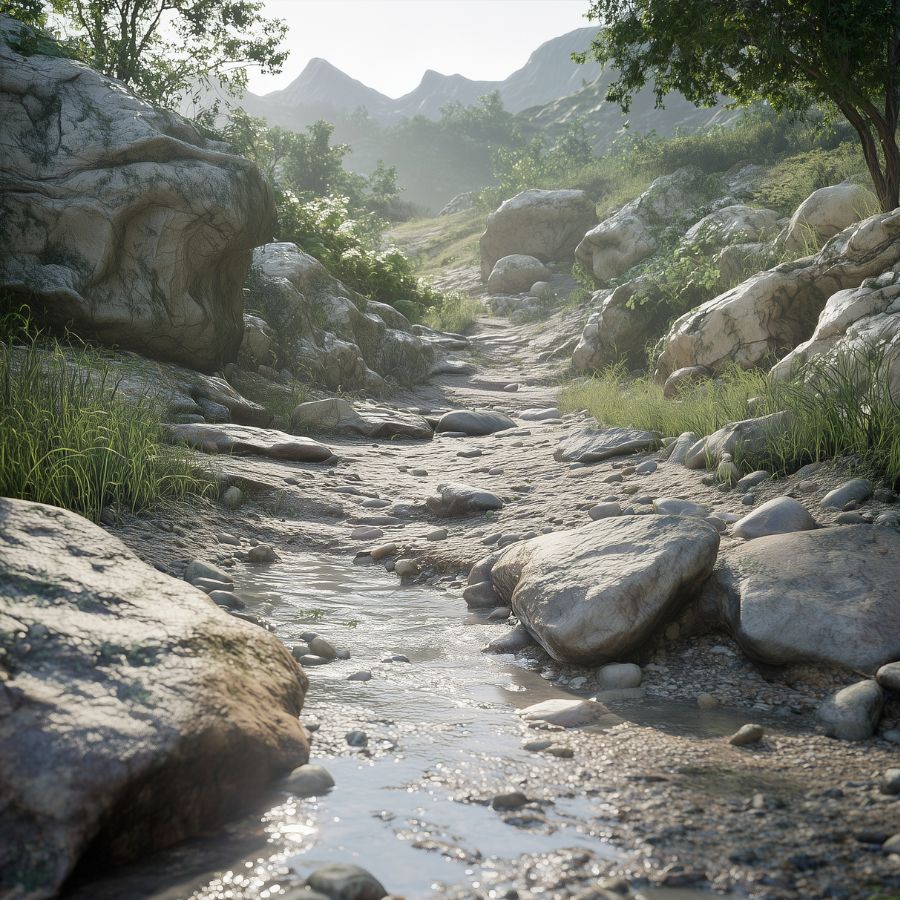
Geodes often form in riverbeds or streams. Water flow smooths out their rough edges and deposits them in these areas.
When exploring, focus on gravel bars or the edges of rivers where rocks naturally gather.
Search in Sedimentary Rock Layers
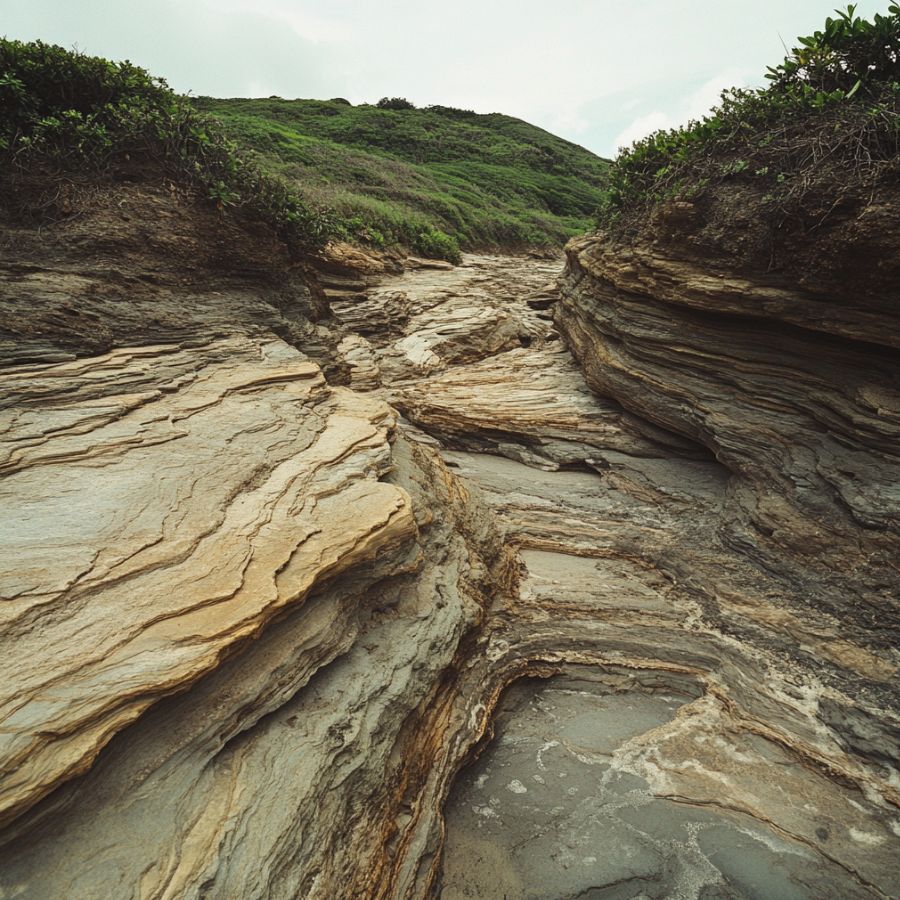
Sedimentary rocks, like limestone, are prime spots for geodes. These rocks form in layers over time, trapping minerals inside.
Look for areas where sedimentary rocks are exposed, such as cliffs or road cuts.
Visit Old Mines or Quarries
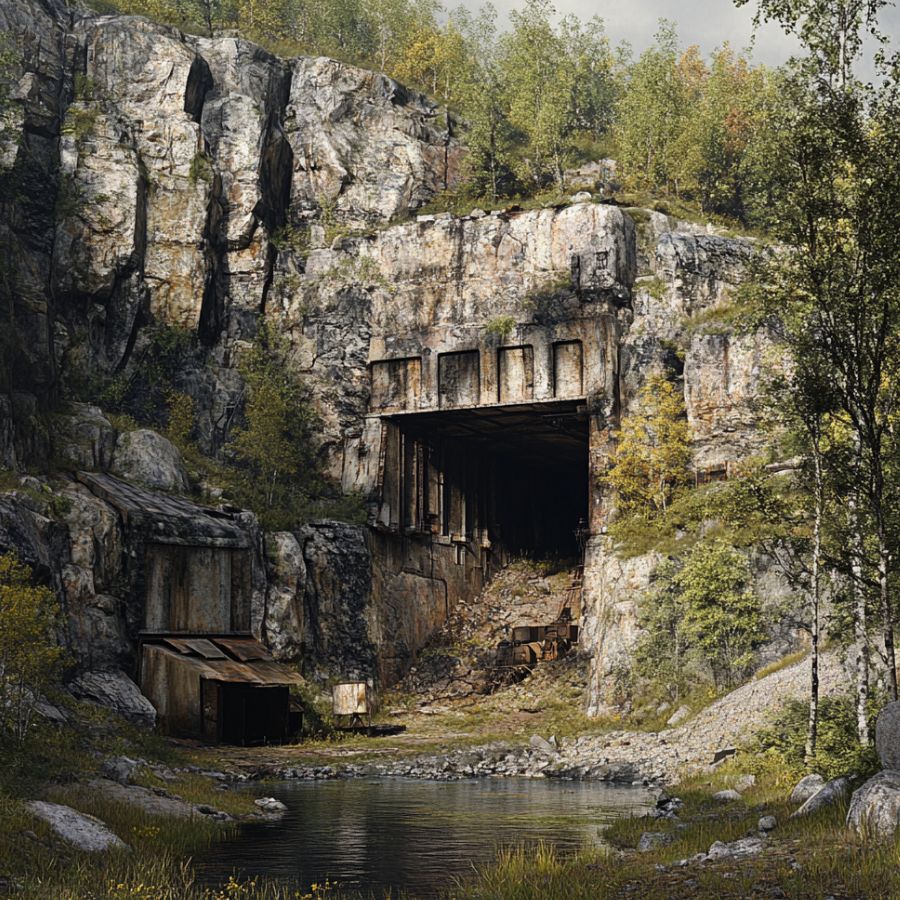
Abandoned mines and quarries are excellent spots for geode hunting.
Workers often missed geodes while digging for other materials. Explore the tailings or leftover rock piles for hidden treasures.
Explore Hills and Rock Outcrops
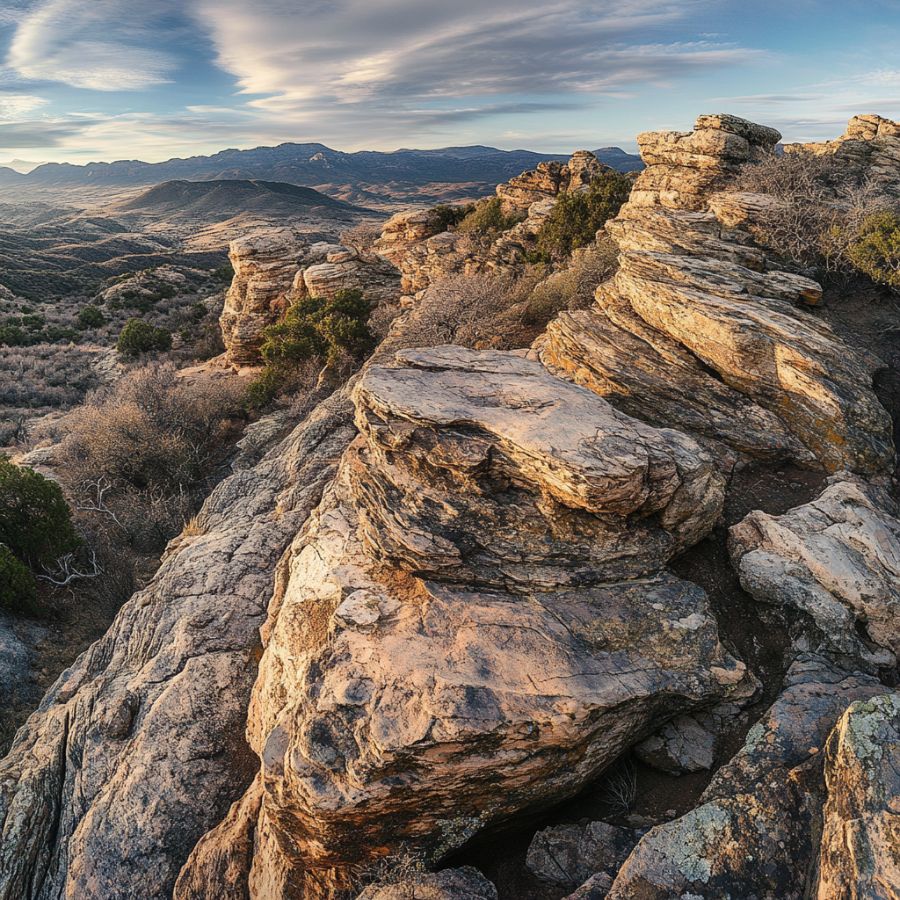
Hills and rocky outcrops often reveal geodes. As erosion wears away the softer rock, it exposes the harder geodes.
Look for areas with exposed rocks and keep an eye out for rounded shapes.
The Types of Geodes You Can Find in Indiana
Geodes vary depending on the minerals present in their crystal formation. In fact, a geode’s value is determined based on what kind it is. In Indiana, the following are the different types that you’ll find:
- Ankerite geodes
- Aragonite geodes
- Calcite geodes
- Celestite geodes
- Chalcedony geodes
- Crystal Geodes (Also called “Geodized fossils” because it’s shaped like a fossil brachiopod, plecyopod, crinoid head, or coral even though it does not contain any fossil material.)
- Dolomite geodes
- Fluorite geodes
- Geothite geodes
- Honessite geodes
- Kaolinite geodes
- Limonite geodes
- Marcasite geodes
- Millerite geodes
- Pyrite geodes
- Pyrrhotite geodes
- Quartz geodes
- Siderite geodes
- Sphalerite geodes
The Best Places To Find Geodes in Indiana
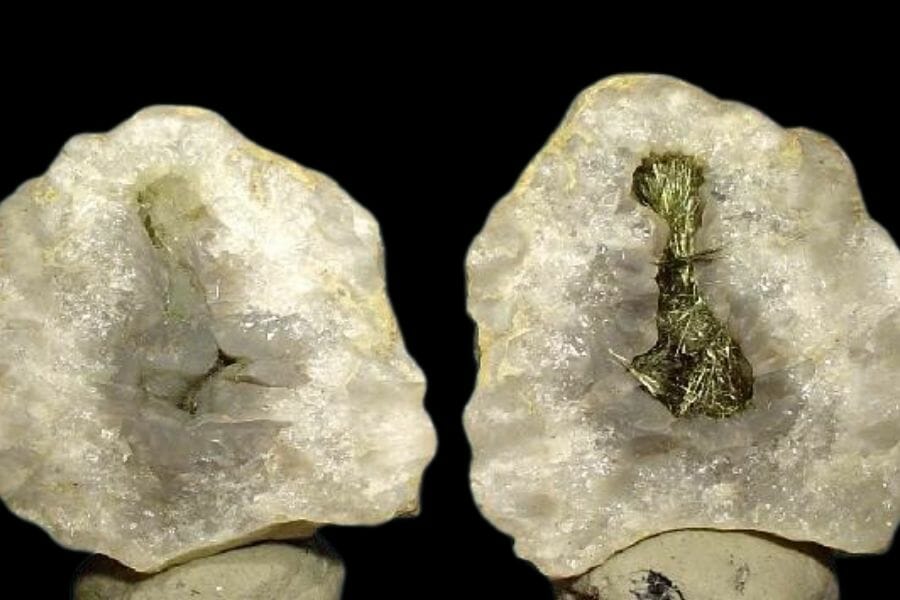
There are tons of great places to mine gems in Indiana, but they do not necessarily have geodes in them, too. The places we’ll share with you below are seldom known by gem hunters, but they are excellent locations if you want to find geodes in Indiana.
Always Confirm Access and Collection Rules!
Before heading out to any of the locations on our list you need to confirm access requirements and collection rules for both public and private locations directly with the location. We haven’t personally verified every location and the access requirements and collection rules often change without notice.
Many of the locations we mention will not allow collecting but are still great places for those who love to find beautiful rocks and minerals in the wild without keeping them. We also can’t guarantee you will find anything in these locations since they are constantly changing.
Always get updated information directly from the source ahead of time to ensure responsible rockhounding. If you want even more current options it’s always a good idea to contact local rock and mineral clubs and groups
Beanblossom Creek
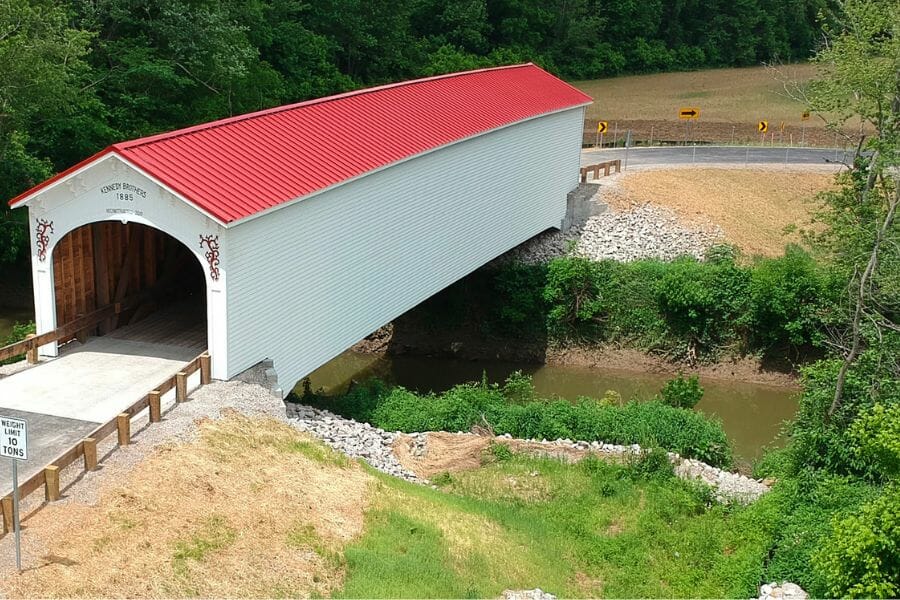
Beanblossom Creek, which runs for about 17 miles, winds its way through some beautiful countryside. Its surroundings is mostly wooded, with some open fields here and there. There’s a lot of wildlife in the area, including deer, foxes, and different kinds of birds. Around the creek, the terrain is pretty flat, but there are some gentle hills in the distance.
The geology around the creek is mostly sandstone and shale. There are some really interesting rock formations to check out, too. The creek itself is pretty clear and shallow in some spots, and deeper in others. Which is why it’s a great spot to go geode hunting!
But before you plan your trip here, make sure to check the updated collecting guidelines of Indiana.
Where we found geodes at Beanblossom Creek
Geodes can be found pretty much on any part of the Beanblossom Creek, so when you go geode hunting here, make sure you explore all the areas of this location.
DON'T MISS OUT ON ANY GREAT FINDS!
While you're out searching for Moonstone you're going to find a lot of other interesting rocks and minerals along the way. The last thing you want to do is toss out something really interesting or valuable. It can be easy to misidentify things without a little guidance.
We've put together a fantastic field guide that makes identifying 140 of the most interesting and valuable rocks and minerals you will find REALLY EASY. It's simple to use, really durable, and will allow you to identify just about any rock and mineral you come across. Make sure you bring it along on your hunt!
Brown County
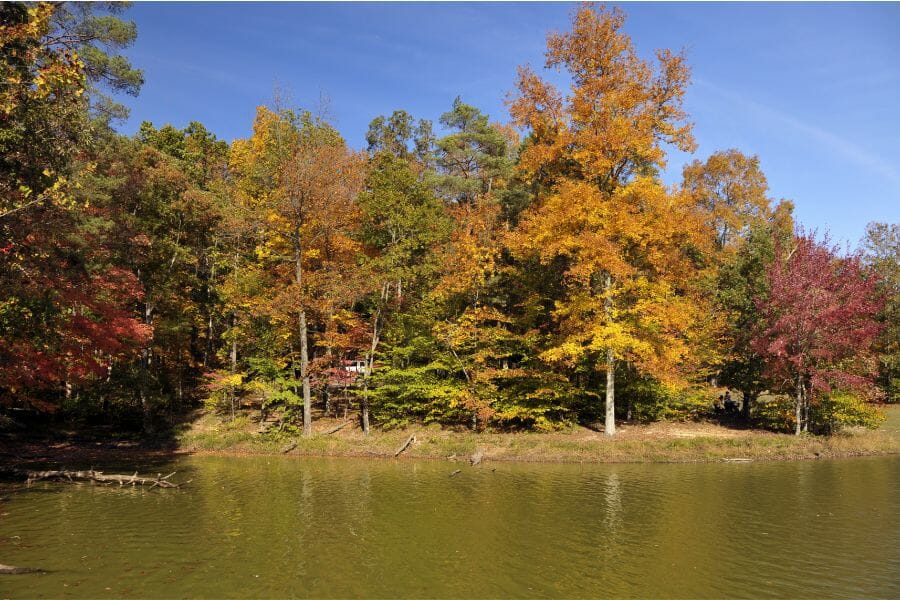
Brown County is a really great place to visit and check out if you’re into geode hunting. Its geography is super diverse, with lots of rolling hills, dense forests, and winding rivers. The terrain can be pretty rugged in some spots, but there are also some nice flat areas.
The geology of Brown County is mostly sandstone and limestone, with some shale mixed in. The are has amazing cool rock formations, including caves and cliffs.
Going here is easy, especially if you’re driving. There are a few major highways that run through the area, so you can get there from pretty much anywhere in the state. There’s also a small airport nearby if you’re flying in. No matter how you plan to go here, it’ll be worth it!
Where we found geodes in Brown County
This county has tons of areas where you can find geodes, including in the road and road cuts throughout the county, stream beds, banks, cliffs, washes, pits, and quarries. Specifically, you can search for geodes in the following spots:
- Brown County State Park
- Beanblossom Creek
- Yellowwood Trail
- Blummets Creek
Lawrence County
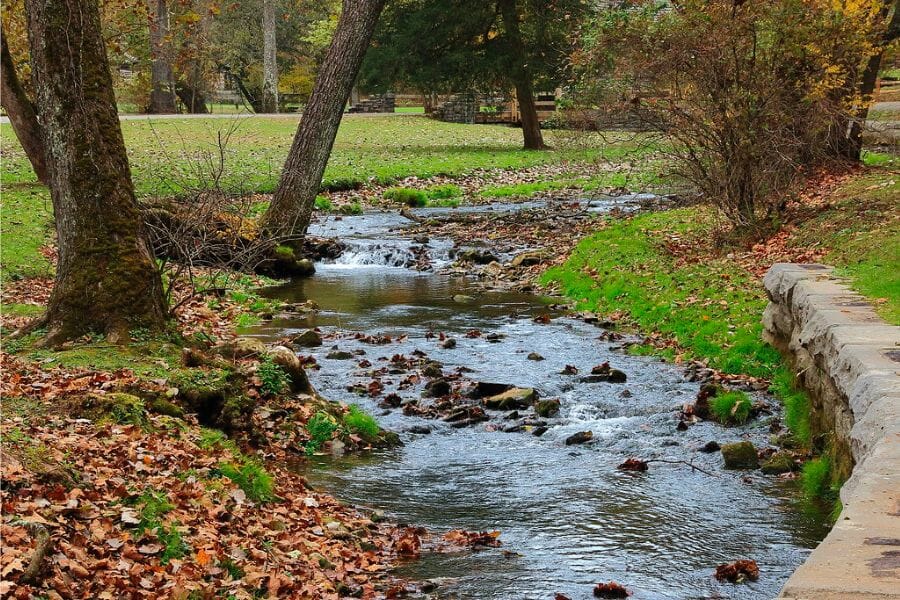
Lawrence County is situated in the southern part of our state. Its terrain is pretty diverse, with everything from flat fields to rolling hills. It’s home to several rivers and streams, including the White River, which runs through the heart of the area.
This county mostly has limestone, with some sandstone and shale mixed in. There are some really cool caves and rock formations here, too.
Getting here is a breeze, especially if you’re driving because several major highways run through here. If you’re from outside our state, you can also fly in as there’s a small airport nearby. So if you’re looking for a great spot to explore and to go geode hunting in Indiana, Lawrence County is definitely worth checking out!
Where we found geodes in Lawrence County
Lawrence County doesn’t run out of areas to explore if you want to find amazing geodes. You can find them in all regional stream beds and banks, road and road cuts, pits, and excavations around the towns of Clearsprings, Erie, Guthrie, Heltonville, Pinhook, Tunnelton, and Zelma. You can also visit and look into the following spots:
- Bedford Creek
- State highway road cuts
- Salt Creek
Salt Creek
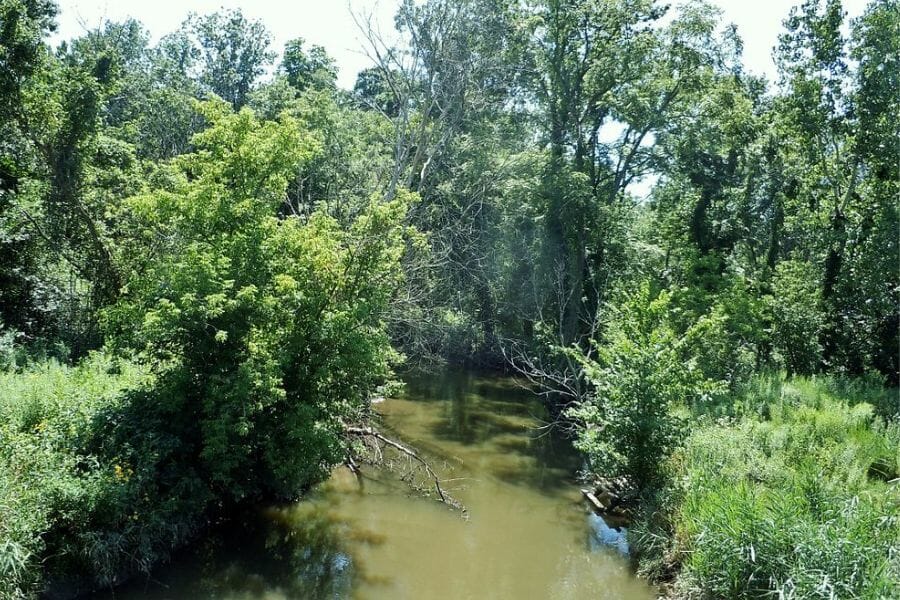
Truly a hidden gem, Salt Creek runs through several counties in the southern part of the state. The terrain around it is pretty diverse, with some areas being hilly and rocky, while others are flat and grassy.
The geology of the area is mostly limestone, with some sandstone and shale mixed in. Aside from geode hunting, if you’re also into hiking and exploring, there are some really cool rock formations and caves here.
Visiting here via car is easy as there are several access points along the creek, with some being more popular than others. And when you visit, make sure you have loads of energy to make the most of your trip!
Where we found geodes at Salt Creek
The gravels of Salt Creek extending to the Bedford area streams and their banks are the specific areas where you can find some of the most amazing geodes here, including Quartz geodes.
Jackson County
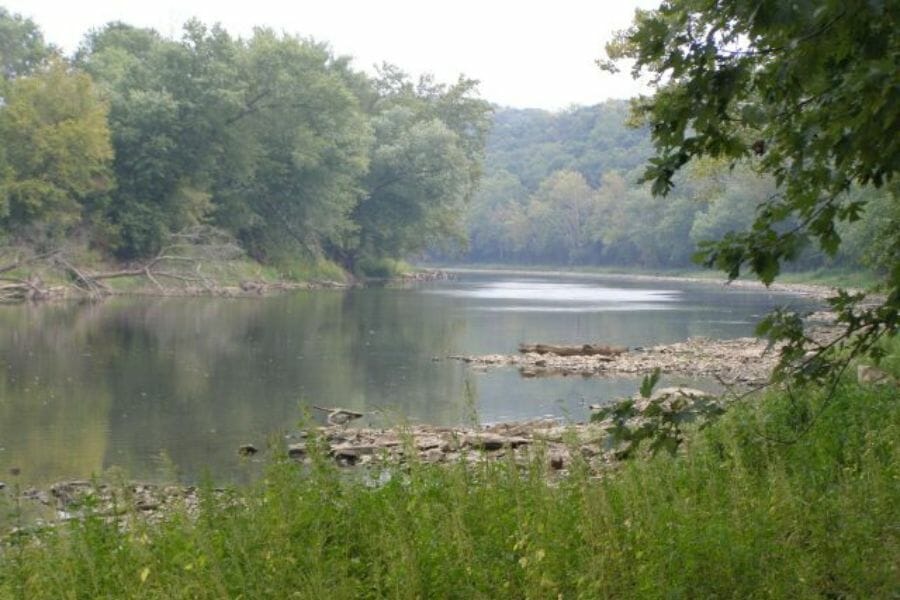
Jackson County is a real treat for nature lovers— and geode hunters! It’s located in the southern part of our state, and it’s got some seriously beautiful terrain. From rolling hills to winding rivers, this place has it all.
The geology of Jackson County is mostly limestone, with some sandstone and shale mixed in. This is why the place has some interesting formations and rock and mineral reserves that will truly amaze you.
You won’t have a hard time reaching this place if you’re driving. There are several major highways here, so you can get here from any part of Indiana. Just be sure to bring your hiking boots and your sense of adventure!
Where we found geodes in Jackson County
If you’re here, chances are you’re near a geode which is so cool! But if you want to be sure you’ll find one, we recommend exploring the following spots:
- White River
- Delaney Creek Road
Other Great Places To Dig For Indiana Geodes
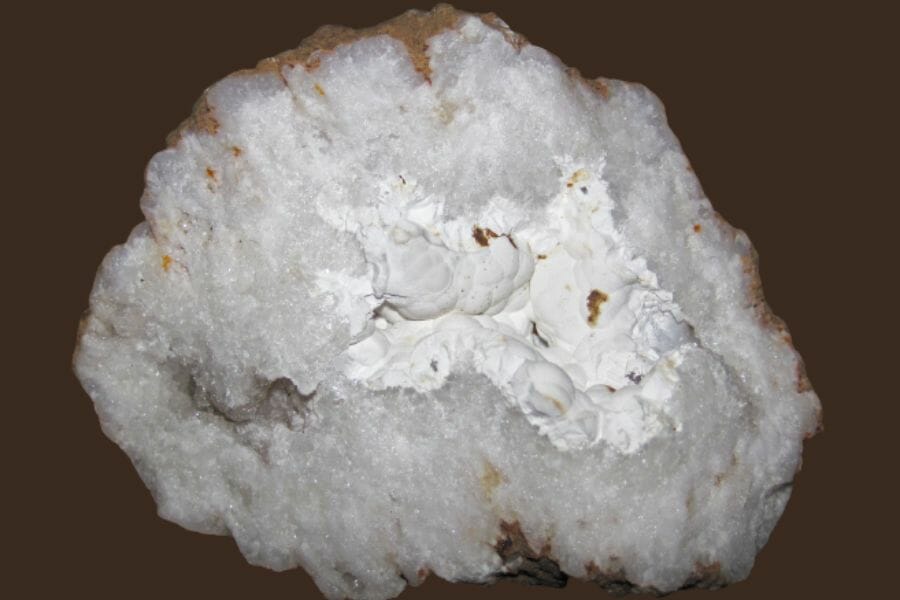
Indiana is amazingly blessed with bountiful geodes, so the places we shared above are not the only spots where you can find geodes here. In fact, there are plenty more! To make your search for geodes easier, we listed these places by county below. For those where we put, “county wide”, we will provide more specific details in the succeeding sections.
Our recommendations by county
| County | Location |
| Brown | County wide |
| Brown | Along Beanblossom Creek |
| Brown | 100’ north of Entrance to Brown County State Park |
| Brown | Stream beds, particularly Bear Creek in Trevlac area |
| Brown | Along the Yellowwood Trail, west of Yellowwood State Forest in Nashville area |
| Brown | SR-45 to Blummets Creek, upstream and down along creek |
| Huntington | Erie Stone Company Quarry |
| Jackson | County wide |
| Jackson | In East Fork of the White River in Medora area |
| Jackson | Creekbed of Delaney Creek Road |
| Lawrence | County wide |
| Lawrence | Bedford Creek banks |
| Lawrence | Roadcut along State Highway |
| Lawrence | Area excavations, stream gravels, pits, road cuts, and banks of Guthrie |
| Lawrence | Area stream gravels and outcrops of Erie |
| Lawrence | Heltonville area and other area streams |
| Lawrence | Salt Creek gravels |
| Lawrence | In fields surrounding the Tunnelton area |
| Miami | Area stream banks, raod and road cuts, excavations of Erie |
| Monroe | In road cut of Bloomington on Rte. 37 |
| Washington | Minnie Holstine Farm |
| Washington | East of SR-56 to edge of town at the Jim Day Farm |
| Washington | 0.9 miles north on SR-135 to creek of Salem area |
Common Geode-Hunting Questions
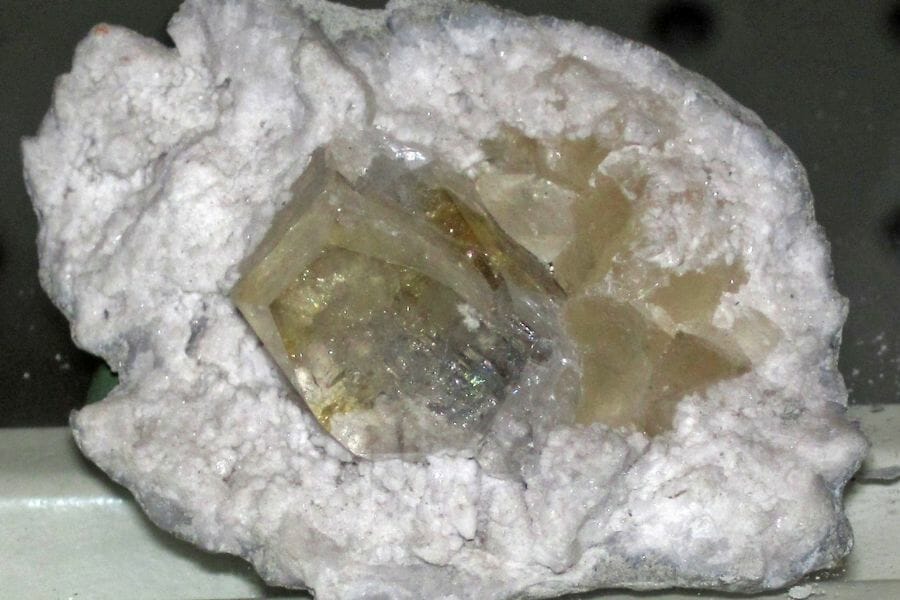
We gathered and answered some of the most common frequently asked questions of people who search for geodes in Indiana. Here are the top two of them:
Where can you find amethyst geodes in Indiana?
While Indiana is rich in geode reserves, unfortunately, it doesn’t have amethyst geodes. But if you’re after this particular type, don’t worry because they’re readily available for purchase in the local shops. We made a list of the best ones below.
Is it illegal to collect geodes in Indiana?
Generally, collecting geodes in Indiana is legal for as long as you follow our local collecting laws. If you’re collecting from government land, check out any local regulations in place. Also, don’t start exploring any private land until you get permission from the owner.
The Best Places To Buy Geodes In Indiana
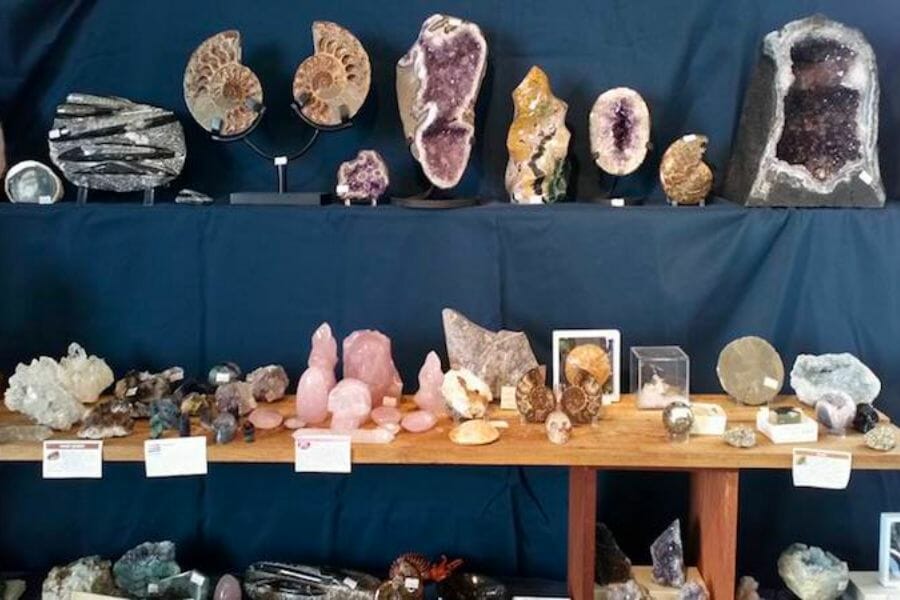
Trekking and searching for hours is not for everybody, and if you’re somebody who prefers to just get a beautiful geode to add to your collection, we compiled and listed down the best local shops in Indiana.
We made sure to include the links and addresses to these shops so you can easily visit them:
- Geodes and Gemstones – 300 Hwy 35 N, Knox, IN 46534
- Amazon – You’ll be surprised at the pretty good variety of geodes on Amazon. In fact, aside from geodes that are ready to be cracked open, they even have complete sets of kits to break them open!
- Love Rocks Lapidary – 16624 Winchester Rd, Ossian, IN 46777
- Earths Creations – 110 E Main St, Knightstown, IN 46148
- Earth Wear Rock Shop – 309 W Main St, Plainfield, IN 46168
- All My Relations – 7218 Rockville Rd, Indianapolis, IN 46214
- The Crystal Lady – 192 W Joliet St Suite B, Crown Point, IN 46307
- Merlin’s Treasure Trove – 825 S 5th St, Terre Haute, IN 47807
- Mystical Moon – 103 E Main St Suite B, Knightstown, IN 46148
- Metamora Gem MIne – 19055 Main St, Metamora, IN 47030
Additional places to find geodes in nearby states
Check out our guides for nearby states if you’ve already tried all of our suggestions above or if you’re planning a trip outside of the state:
If you have any recommendations for our list please leave a comment below!

